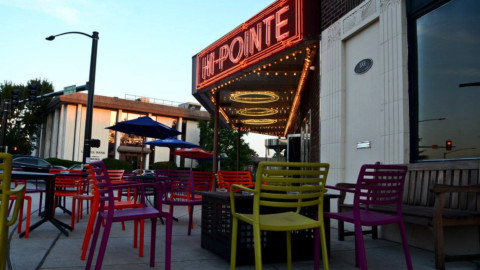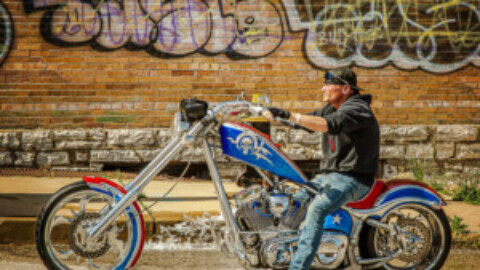
photograph by Jackie Johnson
The Mark Twain I-70 Industrial neighborhood rubs up against the city’s northwest borders, and like its name suggests, consists of largely industrial sites. One notable exception to this are the U.S military sites in the area.

photograph by Michelle Williams

photograph by John MacEnulty

photograph by Ryan Stanley

photograph by Ann Aurbach
There are some places that are difficult to summarize in a single telling of their histories. Often, these places appear now so very different from when they originated that stories of what went on there long ago may seem implausible. This neighborhood is one of those places.

photograph by John MacEnulty

photograph by John MacEnulty

photograph by Jason Gray
Near the beginning of the 20th century, America possessed the world’s most productive industrial community. Some of those industrial sites were so large, with such a huge number of workers, that if you were to suddenly be transported through time to one, you might believe that they were cities unto themselves. During this period, the St. Louis area harbored several sites of this scale; National Stockyards, north of East St. Louis, was one of those places, and the General Motors Complex (later, St. Louis Truck Facility) in the modern Mark Twain I-70 Industrial was another. Consider the image below as evidence, and take a moment to get lost in it.


photograph by Michelle Williams

photograph by John MacEnulty

photograph by Ann Aurbach
It is difficult to say what existed on this land prior to GMC, other than farms (probably nothing), but certainly, this neighborhood’s legacy of constructing, assembling, warehousing and shipping things was secured by this early (and massive) example of the automative industry’s assembly line factory approach. Following the car-maker, the United States Government set up a 26-acre munitions factory complex, shortly before World War II. Over the years, small arms production gave way to larger rounds. There are many recollections of kids in the area, from between WWII and Vietnam, about the distant sounds of ammunition testing (i.e. machine-gun fire) mixing in with the traditional cacophony of late summer nights. Though most of the GMC facility and the largest building of the munitions factory are now gone, some remnants remain. In one case, a church has appeared to take up residence in a former Government site, judging by the bunker-like construction and thick concrete walls surrounding it.

photograph by Ann Aurbach

photograph by Donna Burch

photograph by Ann Aurbach
Following GM’s presence, a new generation of industrial facilities has sprung up, now sheathed in steel instead of brick. ABB, Triad, and Pepsi are all current examples. Yet, between them stretches many acres of unused and unoccupied factory structures and outbuildings that lend a strange and surreal quality to exploring the neighborhood on foot. Many of these abandoned buildings are likely the result of chemical contamination, a by-product of a by-gone era, that most companies (and the city/Federal Government) would rather not have to pay to properly clean up. Some PFSTL peers, who have bravely entered into some of these structures have reported feeling ill almost immediately, with some symptoms lingering for weeks.

photograph by Jackie Johnson

photograph by Jason Gray

photograph by Jason Gray
Today, the largest presence in Mark Twain I-70 Industrial is unmistakably the United States Military, which operates an Army Reserve facility that spans both sides of Goodfellow Boulevard. In the western portion of the neighborhood, there is a beautiful, little subdivision with rows of tidy brick bungalows where most residents live. If you happen to get a job with either the nearby Military or industrial plants, these homes look to offer a great solution for families.
Though probably not the most pedestrian friendly neighborhood in St. Louis, Mark Twain I-70 Industrial does reward a closer inspection, especially if you are willing to also look back in time.

photograph by Jackie Johnson

photograph by Michelle Williams

photograph by Ryan Stanley
MAP:

Our endpoint for Photo Flood 43 was a sight familiar to us from Photo Flood 2, the inimitable Goody Goody Diner. If you have never been, Goody Goody is an absolute gem. A leftover from the Route 66 era, the diner is packed all day, everyday, and that’s because of both the food and great hospitality. Next time that you are hungry and in the area, don’t pass this place up.

photograph by Jackie Johnson








